Maghā—Here Resides Splendor
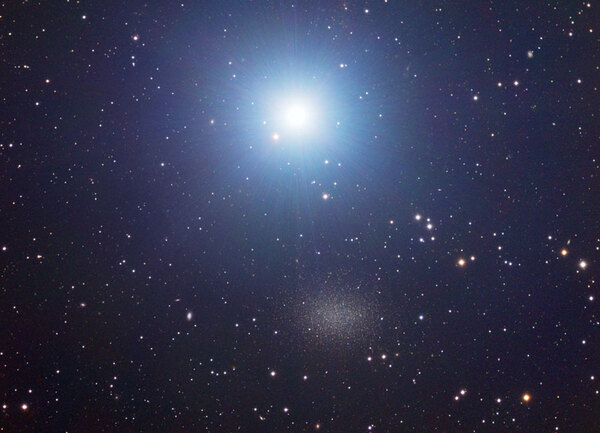
उप॑हूताः पि॒तरो॒ ये म॒घासु॑। मनो॑जवसस्सु॒कृत॑स्सुकृ॒त्याः।
ते नो॒ नक्ष॑त्रे॒ हव॒माग॑मिष्ठाः। स्व॒धाभि॑र्य॒ज्ञं प्रय॑तं जुषन्ताम्।
ये अ॑ग्निद॒ग्धा येऽन॑ग्निदग्धाः। ये॑ऽमुल्लो॒कं पि॒तरः॑ क्षि॒यन्ति॑।
यांश्च॑ वि॒द्म यां उ॑ च॒ न प्र॑वि॒द्म। म॒घासु॑ य॒ज्ञं सुकृ॑तम् जुषन्ताम् ॥ ८॥
upahūtāḥ pitaro ye maghāsu |
manojavasas sukṛtas sukṛtyāḥ |
te no nakṣatre havam āgamiṣṭhāḥ |
svadhābhir yajñaṃ prayataṃ juṣantām |
ye agnidagdhā ye nāgnidagdhāḥ |
ye’mullokaṃ pitaraḥ kṣiyanti |
yāṃśca vidma yāmu ca na pravidma |
maghāsu yajñaṃ sukṛtaṃ juṣantām || 8 ||
“The Fathers are called upon, who are in the stars of Maghā;
They with the speed of Mind, well‐doing, well performing their duties,
Speeding up to our Offering Call in [this] Nakshatra, should happily accept the Sacrifice offered [with exclamations of] Svadhā!
They who maintain the sacred Agni, and who maintain not.
The Fathers who abide in the transcendent world, whom we know and know not,
They should accept [our] well‐made Sacrifice in Maghā.”
Lineage, Power, and the Throne Room
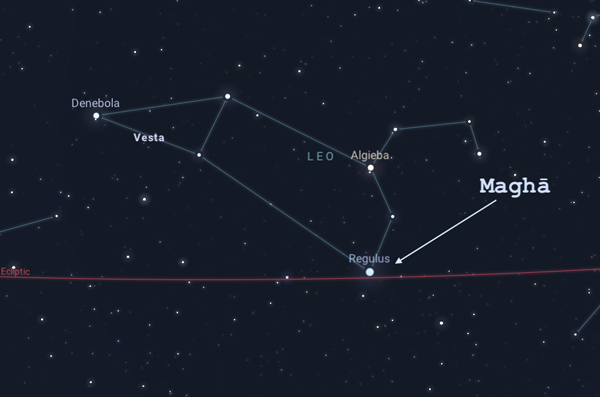
Maghā (Regulus), the splendid star of royalty, is marked as such by sky-watchers through the ages. The bright stars were understood to be representations of a timeless primordial śakti whose meanings can be seen around the globe. It, too, is one of the four Royal Stars of Persia. Underscoring this are the similar meanings for Regulus readily found in other cultures. Regulus, in Latin, means “prince” or “little king,” while the same star in Arabic is known as Qalb al-Asad, meaning “the heart of the lion.” The Babylonians knew this star as Sharru, or “the King,” while in Chinese, it is the Yellow Emperor, or Huangdi. Perhaps these similar meanings exist because Regulus A, the first of the four planets in the cluster, is approximately 3.8 times the size of the Sun. So, even on Earth, from 77.5 light years away, we still find it alluring and commanding of our attention.
Maghā is smack on the ecliptic, only 27’ north. The ecliptic (apparent path of the Sun around the Earth) is called the Sūrya Mārga, the royal path of the Sun, so it seems fitting that Maghā would be right on that path and in the constellation of Leo, the King. Its ecliptic longitude is 5°Leo 59’.

The meaning of the noun magha in Sanskrit is “a gift, reward, bounty wealth, or power,” and bestowing that on those who are shined upon by this auspicious star. All of these meanings of Maghā are quite confluent with the pratimā or symbol of the nakṣatra. As can be seen (with some rotation) in the above diagram, the connecting lines form a throne, and therefore, Maghā aligns with the throne room, a place of consolidated power and wealth reserved for the ruler and his chosen attendants. This last part is of particular interest because Maghā’s yoga tārā (marking star), the radiant Regulus, is not a single star but rather a tightly woven cluster of at least four stars. Perhaps this alludes to the entourage every king has and every Maghā native would like to have.
The meanings ascribed to Maghā in the ancient texts (śāstra) are quite consistent between texts. For example, the famed Varāhamihīra in his great work, Bṛhat Jātaka, states:
bahu bhṛtyadhano bhogī sura pitṛ bhakto mahodyamaḥ pitrye I
“(A person born under the nakṣatra of Maghā) will have numerous servants, will worship Pitṛs, and will be engaged in important work.”
Lineage is Life
Note the word Pitṛs in the above verse. The deities for this nakṣatra are the Pitṛs—one’s familial ancestors—who literally gift us with life. It can be the immediate ancestors or the entire ancestral line tying us back to the most ancient progenitors.
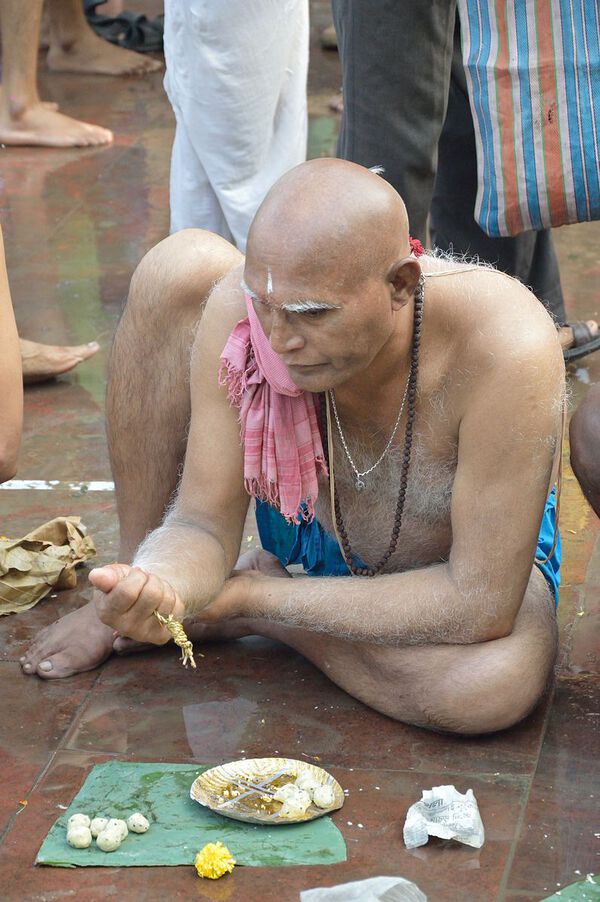
Currently, in the West, where we had largely forsaken lineage for all that is new, plastic, and shiny, there has been a shift to an awareness of lineage as many have taken advantage of companies offering comprehensive analyses of DNA samples. Might be interesting to know if they are founded and run by people with prominent Maghā placements in their charts! Perhaps more people are realizing the significance of the Pitṛs and a strong family line. We mustn’t forget that life is lineage. To be alive is to come from something before us that lived so that we might. The branch of the tree is alive because it is connected to the trunk, the trunk in turn because it is connected to the Earth. The very soil is fertile because it is the accumulation of all life that came before it.
Where lineage fails, death ensues. When a species goes extinct, that lineage ends, and we all experience less richness and regality as the throne room of the world loses one of its pillars. Perhaps the main reason we are seeing such destruction in Kali Yuga is simply that we have forgotten to honor all forms of living lineage as sacred and deserving of preservation. This is something we can learn not only from Maghā, but also from the very structure of an astrological chart, because the second bhāva (house) of accumulated wealth is also the bhāva of one’s family. Simply put, connection and lineage directly create wealth of every kind.
Traditional cultures that have for millennia embodied the world’s greatest truths knew this well and thereby sought to always protect lineage. The Vedic and post-Vedic cultures of modern-day India make for perfect examples, for they all stem from two primary lineages. The Kuru-Pañcāla region (modern day Delhi, Haryana, and Punjab) belonged directly to the Lunar Dynasty, that gave rise to the Mahābhārata. As the name suggests, this lineage traces its origins all the way back to the story of Bṛhaspati (Jupiter) and his wife, the goddess, Tārā, who left Bṛhaspati for the more engaging and charming Moon. Those who know the story remember that the child of this encounter was Budha, the graha Mercury, whose eventual great grandson would be Pūru, the originator of the Paurava clan where the great king, and namesake of India, Bhārata, would be born. Most notably Kṛṣṇa and the great sage, Parāśara, hail from this lineage.
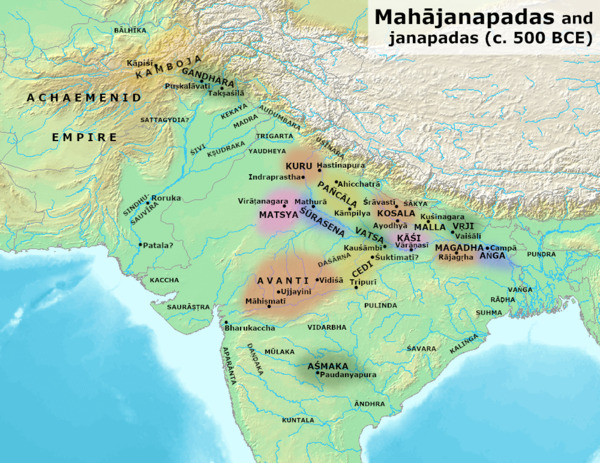
Just as the Mahābhārata is centered around the Pitṛs of the Lunar Dynasty, the Solar Dynasty of the Central Gangetic region gave rise to the Ramāyana, and thereby also Rāma. It’s interesting to note in this dynasty that Ikṣvāku, the first king of Ayodhyā, is an ancestor of the Śākhyas, the family of the historical Buddha. Hence, the Buddha and Rāma are all from the same group of Pitṛs.[1]
This illustrates perfectly the extreme importance of lineage, in that through merely two dynasties, we have the most important stories and cultural heritage of the entire Indian subcontinent. Additionally, we must remember that much Vedic wisdom, especially that of Āyurveda and Jyotiṣa, was passed exclusively through families, and still is to this day. When the power and importance of lineage is spoken of in the meanings associated with Maghā, this is what is being referred to.
The Heavens Amongst Us
Gavin Newsom October 10, 1967 05:13 San Francisco, CA USA [2]
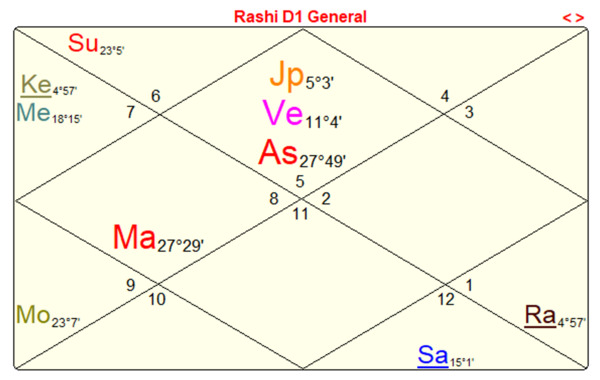

Gavin Newsom, the 40th and current governor of California, though not having his Ascendant point in Maghā, nonetheless, nicely exemplifies the nakṣatra, as it is activated by both Jupiter and Venus, the two great benefics and the most brightly shining of the tārā grahas (true planets). Additionally, the themes of the rāśi (constellation) of Leo dovetail nicely into the stories of Maghā. For this and the other reasons given below, Newsom comprehensively embodies most of the splendid qualities of Maghā.
Halls of Regality
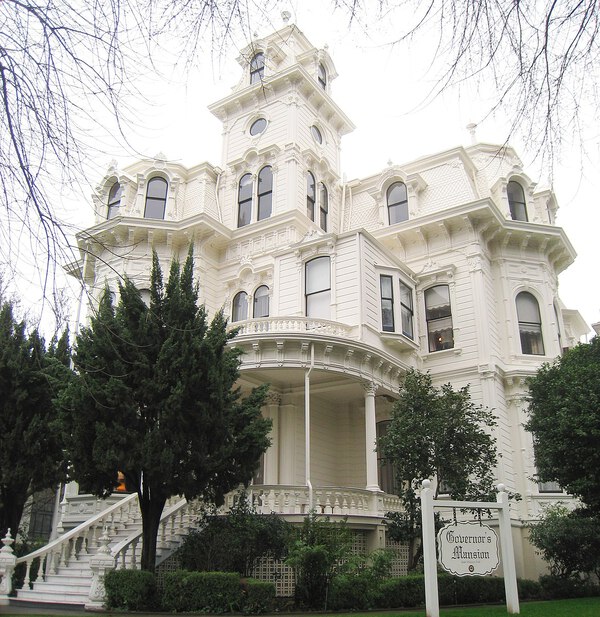
Newsom, who first became the mayor of San Francisco, and would go on to be the lieutenant governor before becoming governor, has consistently been in positions of authority, harkening to Maghā’s affinity toward places of power and decision-making. The aforementioned presence of both Jupiter and Venus, grahas that signify advising, mentoring, and consensus building, gives him a unique ability to not only reach and understand people of varying persuasions, but to be able to channel this understanding into the places of power he will always find himself in. Additionally, as lords of the fifth and tenth bhāvas, respectively, Jupiter and Venus form a powerful Mahā Rāja Yoga (combination for pre-eminence) in his Ascendant tying themes of government, career, and action (tenth bhāva) to those of intellect and good discernment (fifth bhāva), which he uses to propel his success.
This Mahā Rāja Yoga is significant in that it is formed by these auspicious grahas, which will enhance and support the emergent themes in a Maghā native’s life. This is especially useful for Newsom being a Leo lagna, who will already have a tendency to lead throughout his life.
Furthermore, having two natural benefics in his lagna will not only fortify his lagna and bless him with the ability to utilize these powerful combinations, but it will also give him a more kind and humanitarian slant in life, something all too often lacking in those in resplendent places of power. As examples of this, one need only look at a few of the hallmark issues he has made central to his political platform: ending capital punishment, criminal justice, cannabis legalization, and also education.
The Largesse of the Ancestors
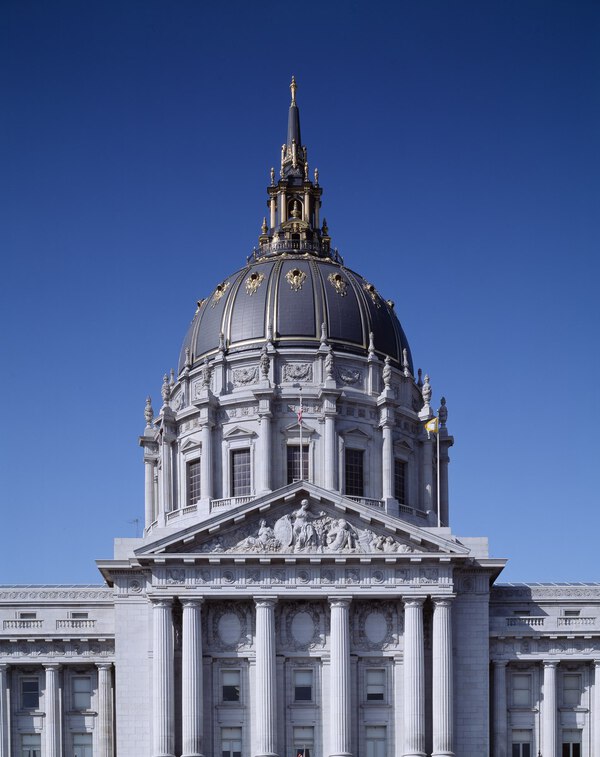
In typical Maghā fashion, these attributes weren’t merely a result of his own efforts, but also those of the Pitṛs, his family line. Newsom became the mayor of San Francisco at the young age of 36 and is himself a fourth-generation San Franciscan. Contributing to the theme of power-filled lineage typical of Maghā, his father was a state appeals court judge and an attorney for Getty Oil, while his maternal great-grandfather was a professor of medicine at Stanford University. Just as the reigning star Regulus is a cluster of stars that cannot be separated, Newsom’s Maghā-rich life cannot be seen in isolation from the lineage he came from. Even the strong sense of humanitarian causes and the rights of others were strongly encouraged from an early age by his parents, as his mother opened their house to foster children while the family’s finances were often tight because his father regularly gave money away to help those in need.
Given the lineage and his father’s profession, it is no surprise that Newsom got his degree in Political Science, but unlike many politicians, he did not go on to law school. However, he did benefit through his father in another seminal way. Prominent families mingle with others of the same ilk, and Newsom got a huge boost from family friend, Gordon Getty, who invested initially in a wine store Newsom founded, called The PlumpJack Wine Shop. It grew into 23 businesses including wineries, restaurants, and hotels. His sister became President of the PlumpJack Group, which to this day is involved in a lot of charity work initiated by Gavin along with his family and partners. [3]

Property is a significant theme in Maghā nakṣatra, as land and family home is a large part of what is inherited. In Newsom’s case, this theme did fructify, but through a family contact rather than the family itself. However, it is easy to see why and when this happened when looking at Newsom’s chart. He has an exquisite Rucaka Yoga[4] in the fourth bhāva made by svarāśi Mars. Along with land and ancestral property, this bhāva indicates the hospitality industry, which would encompass a huge piece of the PlumpJack Group portfolio. His prowess in business is also indicated by the tenth bhāva of career in the business-savvy rāśi of Taurus, with the tenth lord, Venus, in the Ascendant with the strong dig bala[5] Jupiter and no affliction. It is also important to note that all of this activity was initiated and developed in his Mars daśā.[6].
In the text, Phaladīpikā, Mantreśvara states that, the person born in Rucaka Yoga will “acquire wealth by performing courageous deeds,” “be full of valor and powerful,” and “will conquer his enemies (PD 6:2),” all qualities readily exemplified by Newsom. Thus, we have not only significant placements in Maghā but also a multitude of other factors all ensuring bounty, success, wealth, and power.
The Big Screen: A Modern-day Throne Room
Julia Roberts October 28, 1967 00:16 Atlanta, GA USA [7]
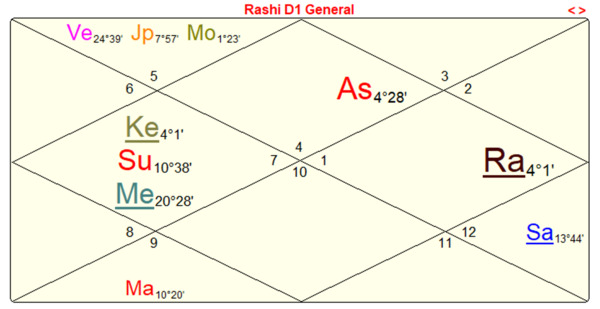
In our modern-day world, the roles of king and queen have been spread to other realms of influence, most assuredly including film, where one’s image and action can potentially influence people all over the world to as great extent as any ruler. Into this realm of regal influence steps actress, Julia Roberts, who amply conveys the prestige, fame, and status indicated by this lunar mansion.
The DNA of the Arts

Photo courtesy of Roland Godefroy, CC BY-SA 3.0 via Wikimedia Commons.
Though from humble and troubling beginnings, there were still themes of benefit from lineage as both of Roberts’ parents were involved in the arts. They co-founded the Atlanta Actors and Writers Workshop as well as ran a children’s acting school in Georgia. As an interesting aside, her parents taught the daughter of Coretta and Martin Luther King, Jr. For this, the Kings paid Julia Roberts’ mother’s hospital bill when Julia was born. We can see that the lagna lord, Moon, lord of the ninth bhāva of father (Jupiter) and the lord of the fourth of mother (Venus) are all in the second bhāva.
Adding to all this, her elder brother (an eleventh bhāva theme) is also indicated by Venus. He was making a name for himself as an actor and with his help, Julia signed with her first agent and began her incredible rise. Venus and Jupiter, along with Mercury, are making a Sarasvati Yoga[8], which is often seen in the charts of artists, intellectuals, and communicators. As we will see, other combinations in this second bhāva will rocket her to success spurred on by the auspicious light of Maghā dominating this part of the chart.
A Queendom of Wealth

Julia Roberts is one of the most financially successful actresses in Hollywood and was the highest paid actress in the world in the 1990s and early 2000s. She reportedly made $20 million from 2000’s Erin Brockovich, alone! However, this is just the monetary wealth. If we widen our scope to include awards and pinnacles, which are in the Maghā portfolio, we see that throughout her impressive acting career spanning more than 30 years, Julia Roberts has received more than 31 highly acclaimed awards including Academy Awards, Critics’ Choice Awards, Golden Globe Awards, and many other popular awards. She is, indeed, adored by the public very much like a favorite royal.
Her lagneśa (Moon), as well as Jupiter, reside in Maghā in her second bhava, which indicates net worth and wealth accumulating through one’s efforts, especially when the lagna lord is involved. Both are making Dhana Yogas (combinations for wealth) with each other and with Venus, who joins them in this stand-out bhava. There are also beautiful Rāja Yogas for pre-eminence made with the same grahas. All of these combinations are especially enhanced because of the rare, pristine condition of the second bhava, in which they are placed. When there are benefics in the second bhāva without any malefic influence, it forms a Suśubha Yoga[9] (very auspicious). There are also other rare wealth combinations created here which take what is already incredible into the stratosphere.[10]
The Smile That Dazzled the World

As mentioned earlier, a Maghā native is already likely to shine in life as they mirror their nakṣatra’s luminosity. However, it is her ruling planet, Moon, a very social, beautiful, and charming planet, residing in Maghā in the second bhāva of the face, along with the graha of good fortune, ninth lord, Jupiter, and the other graha of beauty and charm, Venus, ruling the eleventh bhāva of the goals, achievements, and the entertainment industry that contributed to her success in films.
Here, the symbolism of the royal throne room manifests in the form of Hollywood, a modern-day palace with cinematic pillars, where new types of royalty reside. Roberts has a mesmerizing smile and charisma that is undeniable. She somehow made the rather unbelievable storyline completely plausible because she was the quintessential “pretty woman” in the massive hit film of the same name. Perhaps this is why she has also been given the title of the most beautiful woman in the world by People magazine a record-holding five times. Having Venus occupy the fun-loving, pleasure-driven, and, not to mention, successful, Purva Phalgunī nakṣatra simply adds to the accolades and fame she has rightfully received. All of these yogas in this iconic second bhāva have at least one component graha under the sparkling light of Maghā, infusing them with all the gifts of this most auspicious star.
Establishing as well as Benefitting from Legacies

When Maghā nakṣatra is activated by benefics, the positive themes of dignity and dharma are often there. Julia Roberts is a goodwill ambassador traveling to many countries to raise awareness and funds to combat poverty. She is active in climate initiatives and has made a powerful video as Mother Nature in support of Conservation International[11]. She was one of the first to participate in the global response to COVID-19 in the #PassTheMic campaign where the stars turned over their social media accounts to frontline workers and health and economic experts to share perspectives on the pandemic and other initiatives to end extreme poverty and preventable disease. And she is teaching her daughter that she has a voice and a place in the world by taking her to the first Women’s March in Washington.
Another most significant legacy and lineage that Roberts connected to happened during her trips to India, and especially during the filming of Eat, Pray, Love. She became a devotee of guru, Neem Karoli Baba, whose picture she happened to see. That kind of instant strong connection to a guru seems to not be accidental, as has been told by many others with this experience. She became a Hindu, including taking up a vegan diet and, in her own words, relates how it has affected her outlook on life: “I am fulfilled by my own life on an hourly basis. Every little moment is amazing if you let yourself access it.”[12]
A nakṣatra’s meanings and stories will always manifest in accordance with the rest of the chart, hence, the need to thoroughly understand the lagna, the lagneśa, and the “ecosystem” of the chart to arrive at a comprehensive knowing of who the native is. To illustrate the multifaceted realms in which a particular lunar asterism can shine, we turn to Paramahaṁsa Yogānanda, a well-known individual who effectively represented the themes of lineage and halls of prominence, respect, and prestige, through a world-changing spiritual message.
Spiritual Royalty Born from Lineage
Paramahaṁsa Yogānanda January 5, 1893 Gorakhpur, India[13]
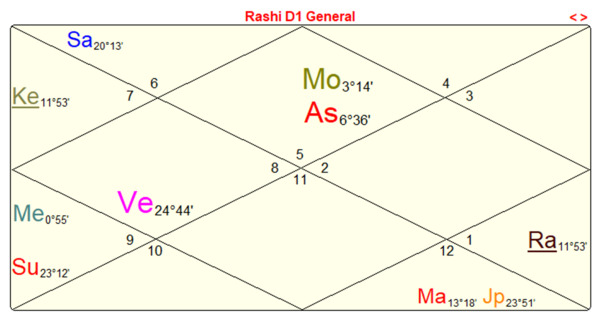
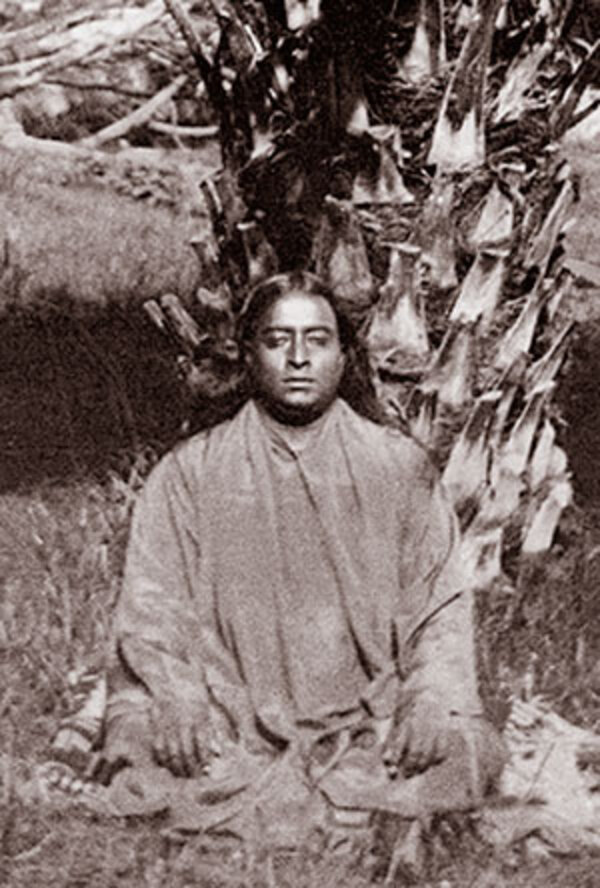
The spiritual teacher, yogi, and founder of the Self-Realization Fellowship, Paramahaṁsa Yogānanda, whose lagna and Moon both reside in this nakṣatra, was born early in the year of 1893 in Uttar Pradesh, India. Yogānanda would become one of the most well-known mystics of all time as he brought the forgotten science of Krīya Yoga not merely out of the Himālayas, but into the West, through the United States.
Where Newsom and Roberts exemplified Maghā’s themes in more expected ways via their vast monetary success and the support of their familial line, Yogānanda’s expression of this dynasty-based nakṣatra and its royal halls is quite different.
For starters, with the Moon in the lagna, all the combinations that are seen will repeat from Candra lagna, giving power and confluence. The lagna lord goes to the fifth bhāva with fifth lord, Mercury, forming a lovely Budhāditya Yoga, a yoga for intelligence, and because it is in the fifth, exquisite judgement and insight. Though a very common yoga, when it is as brilliant as this one, involving both the lagna and the fifth several times over, we have someone worthy of the word Paramahaṁsa, the one with supreme discernment. This combination is utterly unafflicted. In addition to this, there are two notable yogas for asceticism.[14] It is the kind of chart in which such a yoga is likely to fructify because of an interweaving of the dharma and of
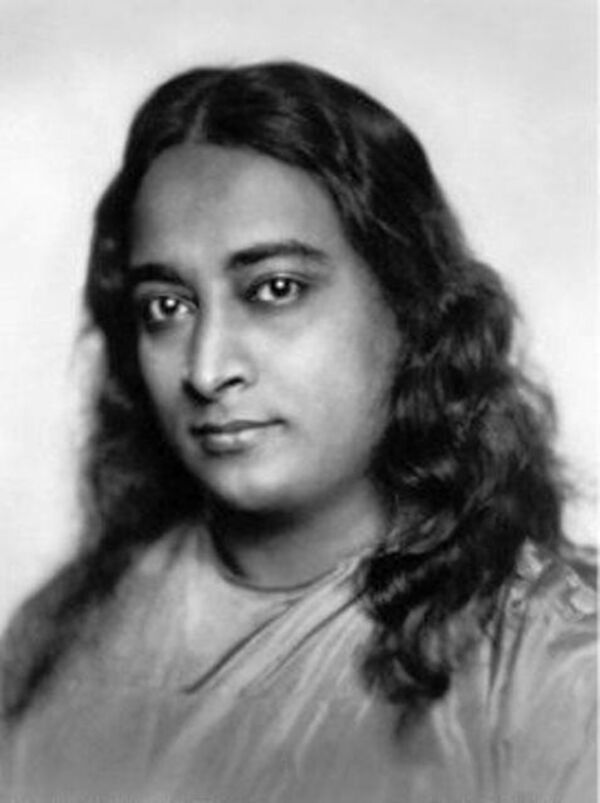
In Autobiography of a Yogi, he shares that he consistently had visions of his Guru, Śri Yukteśwar, long before he met him. Śri Yukteśwar, himself a proficient Jyotiṣi, was the student of Lahiri Mahaśaya (who told Yogānanda’s mother she would give birth to a great yogi) who in turn was the direct disciple of the legendary Mahāvatāra Bābaji, the immortal sage residing in the Himalayas. It would be through this unbelievable line of masters that a rare and nearly lost spiritual practice would find the young Yogānanda. In addition to these great sages, he would also honor Jesus Christ, who he considered to be a part of his same group of Pitṛs on his altar.
What is potentially most striking about Yogānanda in this regard is that in his life the two primary themes of Maghā, namely lineage and royal halls, would be one inseparable reality. In order to better spread the teachings of Krīya Yoga, Yogānanda would establish one of the largest and most successful organizations of spiritual seekers in the world. He first founded the Yogoda Satsaṅga Society of India over 100 years ago in India in 1917 and would change the name to The Self-Realization Fellowship (SRF) once in the US in 1920. To this day, members of SRF honor the teachers that carried the wisdom of Krīya Yoga by having pictures of all of them upon their own altars. That SRF has approximately 500 ashrams, retreat centers, and temples around the world only serves to show the resplendent realm in which Maghā operates.

Being eternal, the lunar constellations will always guide us and shape and form our myths, as well as our very lives. Following the lead of Regulus and Maghā, the heavens both shine down upon us and live here on Earth among us. Just as Regulus is the aforementioned cluster of stars formed around the kingly Regulus A, so, too, will humanity always surround and follow the Maghā natives in our midst. Perhaps more importantly for those not born under this nakṣatra, Maghā also teaches us of the important link between prosperity and our ancestors, perhaps warning us to neither sever the lineages we come from, nor to restrict our wealth, be it monetary, the wealth of wisdom, or the wealth of nature, from those to come.
Author: Richard Powell

Richard G. Powell (Dhyānānanda) is a certified Āyurvedic Practitioner and has studied extensively under Dr. Vasant Lad in both the US and India, Dr. Ashwin Shastry of Arogya Niketana in Karnataka, India, and currently is studying at the Arogya Center in Albuquerque, NM, under Kāshyapa Fisher. In addition to Āyurveda, Richard is an avid student of Yoga, Sanskrit, Vedic philosophy, and, especially, Jyotisha. He has been studying Jyotisha for 7 years and has been fortunate to be studying under Penny Farrow for the last 3 years. Richard maintains a private practice of Jyotisha and Āyurveda consultations.
End Notes:
-
Samuel, Geoffrey. 2008. The Origins of Yoga and Tantra:Indic Religions to the 13th Century. Cambridge University Press: 72-80. ↑
-
n.d. "astrodatabank." astro.com. Accessed April 21, 2021. https://www.astro.com/adb-search. ↑
-
Chuck Finnie, Rachel Gordon, Lance Williams, Staff Writers. 2003. "Newsom's Portfolio." San Francisco Chronicle, February 23. Accessed June 2021. http://www.sfgate.com/cgi-bin/article.cgi?file=%2Fchronicle%2Farchive%2F2003%2F02%2F23%2FMN245262.DTL. ↑
-
Rucaka Yoga is one of the 5 Mahāpuruṣa yogas. The Pañcamahāpuruṣa yogas (set of five yogas) are formed when a tāra graha (one of the five true planets) is in its svarāśi or exalted in a kendra or trikona. Phaladīpikā 6.1 ↑
-
Dig bala is directional strength. Grahas gain strength when they are in the cardinal directions and each graha has one particular direction where it is the strongest. ↑
-
Farrow, Penny. 2018. “Timing is Everything.” The Mountain Astrologer, April/May: 14. ↑
-
n.d. "astrodatabank." astro.com. Accessed April 21, 2021. https://www.astro.com/adb-search. ↑
-
Sarasvatī Yoga is when Venus, Jupiter and Mercury are all in a kendra, trikona or the 2nd bhāva while Jupiter is svarāśi, exalted or in a friend’s rāśi. Phaladīpikā 6:26-27 ↑
-
Kapoor, Dr. G.S., translation/commentary/annotation. 2020. Phaladīpikā . New Delhi: Ranjan Publications:6.8. ↑
-
The wealth combinations referred to here are put forward by Seshadri Iyer in New Techniques of Prediction Part 2: 22. ↑
-
n.d. conservation.org. Accessed June 2021. https://www.conservation.org/nature-is-speaking/julia-roberts-is-mother-nature. ↑
-
IMDb. n.d. Julia Roberts: Quotes. Accessed June 5, 2021. https://m.imdb.com/name/nm0000210/quotes. ↑
-
There is a C rating on this horoscope in Astodatabank. I am using a time that generates the Ascendant degree as shown in Light on Life. (Hart de Fouw and Robert Svoboda) ↑
-
The Jyotiṣa texts give many formations for yogas that lead to sannyasa lifestyle (renunciation). The two in Yogānanda’s chart are given in Phaladīpikā 6.28 and Bṛhat Parāśara Hora Śāstra 79.8. Both are discussed in the aforementioned Light on Life:342-343. ↑
Works Cited
n.d. "Astrodatabank." astro.com. Accessed May 23, 2021. https://www.astro.com/adb-search.
Chuck Finnie, Rachel Gordon, Lance Williams, Staff Writers. 2003. "Newsom's Portfolio." San Francisco Chronicle, February 23. Accessed June 2021. http://www.sfgate.com/cgi-bin/article.cgi?file=%2Fchronicle%2Farchive%2F2003%2F02%2F23%2FMN245262.DTL.
n.d. conservation.org. Accessed June 2021. https://www.conservation.org/nature-is-speaking/julia-roberts-is-mother-nature.
de Fouw, Hart and Robert Svoboda. 1996. Light on Life. Twin Lakes, WI: Lotus press.
Dr. G.S. Kapoor, translation/commentary/annotation. 2020. Phaladīpikā . New Delhi: Ranjan Publications.
IMDb. n.d. Julia Roberts: Quotes. Accessed June 5, 2021. https://m.imdb.com/name/nm0000210/quotes.
Iyer, H.R. Seshadri. 1963. New Techniques of Prediction. Bangalore: Janapriya Prakahan.
R. Santhhanam, translator/commentary/editing. 2018. Bṛhat Pārāśara Horā Śāstra . New Delhi: Ranjan Publications .
Rao, B. Suryanarain. 2018. Bṛhat Jātaka. MOTILAL BANARSIDASS PUBLISHERS PVT. LTD.
Samuel, Geoffrey. 2008. The Origins of Yoga and Tantra:Indic Religions to the 13th Century. Cambridge University Press.

